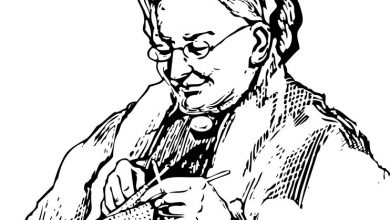The Talented Tenth is an influential essay written by W.E.B. Du Bois discusses the importance of education and leadership among African Americans, particularly the exceptional individuals he refers to as the ‘Talented Tenth.’
W.E.B. Du Bois was a prominent African American civil rights activist, historian, and sociologist. As one of the most influential African American intellectuals and a co-founder of the National Association for the Advancement of Colored People (NAACP), Du Bois played a crucial role in advocating for civil rights and social justice for African Americans in the early 20th century. ‘The Talented Tenth‘ was first published in 1903,
The Talented Tenth | Summary
The author advocates for the advancement of the African American community by focusing on its exceptional individuals, known as the ‘Talented Tenth.’ These individuals possess the potential to lead and guide the masses away from detrimental influences. The author emphasizes the importance of education, stating that it should aim to cultivate intelligence, broad sympathy, and knowledge of the world, rather than solely producing money-makers or skilled artisans. Refuting the notion that African-American leadership should have started with manual labor, the author asserts that political rights and civic status are essential for progress and empowerment. Without these rights, African Americans would remain poverty-stricken and ignorant, easily manipulated by unscrupulous individuals.
While acknowledging that not everyone can attend college, the author argues for the establishment of training centers to develop leaders within the community. These leaders would serve as the yeast for the group, setting ideals and providing social guidance. The college-educated individual should be the group leader, directing the community’s thoughts and leading social movements, as strong social leadership is crucial for the advancement of the African American people.
In this passage, the author highlights the crucial role of African-American colleges in providing teachers to uplift the African American community. The task of furnishing millions of ignorant individuals with teachers of their own race was challenging but vital, as it presented attainable role models for black children and brought them in touch with modern civilization. The main question is how to quickly advance the Southern African Americans in civilization. The answer lies in education that strengthens character, increases knowledge, and teaches employable skills. The author emphasizes that education is not just about schools but a comprehensive human training process. While industrial schools are important, they cannot succeed without first providing higher training for the best teachers. Broadly cultured men and women are necessary to teach and inspire others, making education essential for the progress of the African American people.
The author strongly advocates for manual training and trade education for both black and white boys, believing it to be a valuable addition to post-war African-American education. However, he emphasizes that the ultimate goal of education is not just to produce skilled workers but to cultivate well-rounded individuals. This can be achieved by providing liberally trained teachers and leaders to impart the meaning of life to the community and by offering sufficient intelligence and technical skill to make efficient workers. To address this, the author calls for the establishment of quality African-American colleges to produce college-bred men who can lead and inspire the masses, and a good system of common schools to provide essential education. He asserts that education and work are the keys to uplifting the African American community and emphasizes the importance of the Talented Tenth becoming leaders of thought and culture among their people. Ultimately, the exceptional men of the African-American race will play a significant role in saving and advancing their community.
The Talented Tenth | Background & Context
‘The Talented Tenth’ was written by W.E.B. Du Bois in 1903 during a critical period in American history. The essay was written in the post-Reconstruction era, a period marked by significant advancements for African Americans, but also by the rise of racial segregation and discrimination. The Reconstruction era (1865-1877) brought some progress and civil rights for black Americans, but the subsequent period saw the erosion of those gains through Jim Crow laws and racial violence. At the time of writing, Booker T. Washington‘s approach to racial upliftment was influential. Washington advocated for vocational education and economic self-sufficiency for African Americans, often focusing on manual labor and industrial training. However, in 1905, a year after ‘The Talented Tenth’ was published, Du Bois, along with other prominent African American leaders, founded the Niagara Movement. This organization opposed Washington’s accommodationist approach and sought civil rights, political equality, and social justice for African Americans. Du Bois was a prominent figure in the growing movement of black intellectuals and scholars. This period witnessed a surge in African American literature, art, and intellectual thought, known as the Harlem Renaissance, which emerged in the 1920s.
Du Bois wrote ‘The Talented Tenth’ in reaction to Booker T. Washington’s worldview and the pervasive racial prejudice in this socio-historical setting. He put out a distinct strategy, highlighting the need for leadership, higher education, and cultural development as vital resources for the growth of African Americans. In his essay, Du Bois wanted to dispel the myth that black people’s access to education and economic advancement is limited and to motivate the African American community to generate outstanding leaders who can lead and uplift the entire race. His concepts provided the foundation for the following civil rights struggle and are still used today when talking about the leadership and elevation of African Americans.
Several major themes explored in the text resonate with the struggle for civil rights and racial equality in American history. Du Bois emphasizes the importance of education in uplifting the African American community. He argues that higher education and broad cultural cultivation are essential for producing exceptional leaders who can guide and inspire the masses. This theme aligns with the civil rights movement’s emphasis on education as a means to empower African Americans and challenge the institutionalized racism that denied access to quality education. The concept of the ‘Talented Tenth’ also highlights the need for African American leaders to take on roles as educators, thinkers, and social reformers. This notion aligns with the civil rights movement’s emphasis on strong leadership, as figures like Martin Luther King Jr. and Rosa Parks emerged as key leaders in the fight for racial equality and justice.
Du Bois’s emphasis on the need for the ‘Talented Tenth’ to lead their communities speaks to the push for social integration and equality during the civil rights movement. The movement sought to dismantle segregation and discriminatory practices, striving for a society where black and white individuals could live and work together without barriers. Du Bois questions the idea that the first step in African-American leadership should be manual work rather than political participation. In line with the civil rights movement’s attempts to gain voting rights, equitable representation, and legal protection, he emphasizes the significance of political rights and civic standing for African Americans. Last but not least, the text emphasizes the necessity of a thorough education that goes beyond purely occupational training. African Americans, according to Du Bois, should pursue intellectual and cultural development in their education, not merely for the sake of employment. This idea is consistent with the larger civil rights movement’s pursuit of complete equality in all domains of life, including the social, economic, and cultural ones.
The Talented Tenth | Literary Devices
Rhetorical questions are a powerful literary device where a question is asked not to elicit a response but to make a point or emphasize an idea. They are often used to engage the reader or listener and prompt them to think deeply about a topic or to consider the speaker’s perspective. W.E.B. Du Bois employs rhetorical questions strategically to enhance the impact of his arguments and to challenge prevailing beliefs.
‘What under the present circumstances must a system of education do in order to raise the African-American as quickly as possible in the scale of civilization?‘
This rhetorical question appears in the context of discussing the main question concerning Southern African Americans and the objectives of education. By posing this question, Du Bois emphasizes the urgency of addressing the current situation and the need for effective education to uplift the African American community. It prompts the reader to consider the significance of education and its role in promoting social progress.
By using rhetorical questions, Du Bois effectively engages the reader and encourages critical thinking about the issues at hand. These questions underscore the urgency of the topics discussed and emphasize the significance of education, leadership, and racial equality in the struggle for the advancement of African Americans.
In the text, W.E.B. Du Bois uses analogy to vividly illustrate his points and provide a relatable comparison for the reader. One prominent analogy he employs is comparing education to yeast. He states:
‘…every isolated group or nation must have its yeast, must-have for the talented few centers of training.‘
The term ‘yeast’ represents a crucial element necessary for fermenting and raising the entire community. Just as yeast is a small but essential ingredient that causes the dough to rise and turn into bread, the ‘talented few’ individuals within the African American community, whom Du Bois calls the ‘Talented Tenth,’ play a critical role in elevating the entire race through their leadership and guidance.
Du Bois also skillfully employs metaphors to create evocative imagery and convey complex ideas more succinctly. One striking metaphor he uses is when he talks about making carpenters into men: ‘…it is not to make men carpenters, it is to make carpenters men.’ This metaphor contrasts the idea of simply training individuals for a specific vocation with the broader goal of cultivating well-rounded individuals. The metaphor emphasizes the need for education to go beyond vocational training, aiming to develop the full potential of a person as a human being rather than solely as a skilled worker.
‘The Talented Tenth‘ underscores the importance of education, leadership, and empowerment for the African American community, addressing the pressing issues of racial discrimination and inequality. It aligns with the themes and goals of the civil rights movement, which sought to challenge segregation, promote equality, and secure civil rights for African Americans, making it a significant and relevant text in the history of the struggle for racial justice in America.





